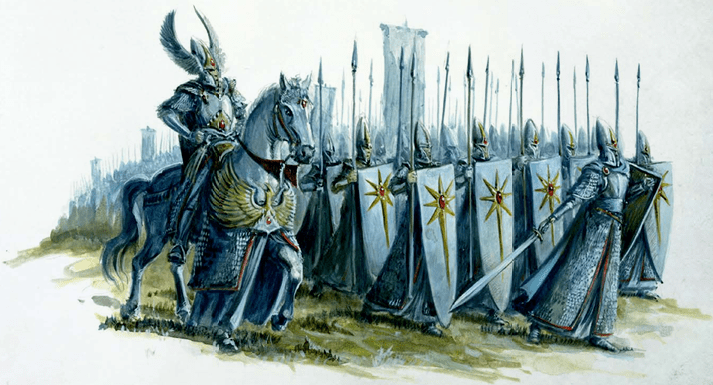The Jewels of Ulthuan Shine Bright
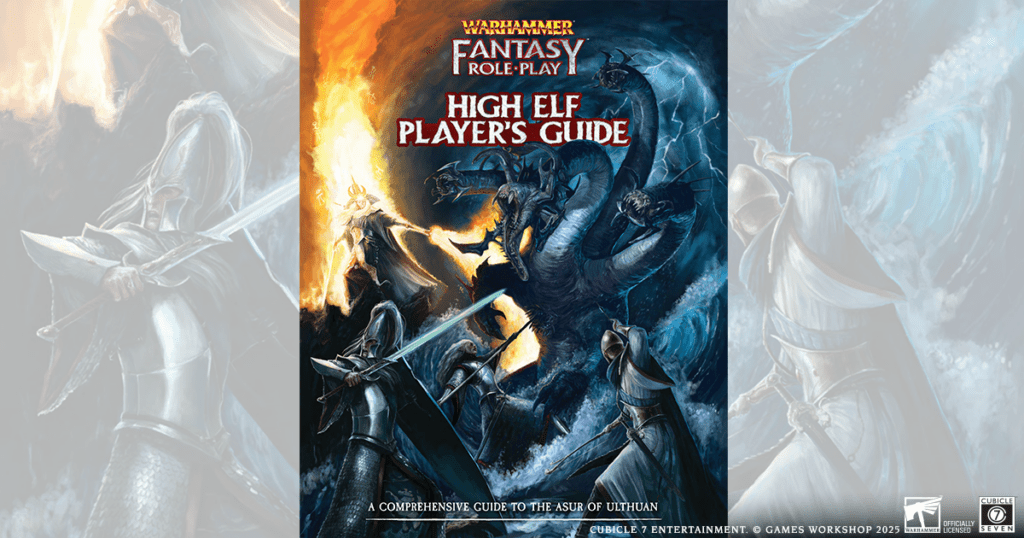
Fantasy IPs, no matter the creator, have some indelible similarities and truths. Whether you’re Tolkein, Blizzard, or Games Workshop, when the word “Fantasy” is thrown out, the thought of Elves soon follows, as do the traditional Elven stereotypes of beauty, grace, and an inherent tie to the world.
Heavily influenced by Tolkein, Norse mythology, Poul Anderson, and Michael Moorcock, Warhammer’s Elves reflect the gritty, violent, and war torn nature of this grimdark setting. While they’re still haughty and aloof, believing themselves superior to all other races, they’re grounded with emotion and history that make these aspects of their personalities more reasonable and understandable from a fan perspective. With entire lives dedicated to the pursuit of excellence, constant war with their dark cousins, and the ever looming threat of the world’s collapse in the End Times from Chaos, the Elves of Warhammer have a near mythical existence. Making rules for Elven player characters that would be interesting and would not eclipse an entire group is definitely a challenge, but one that Cubicle 7 has succeeded on with this guide.
The High Elf Player’s Guide (HEPG) is a comprehensive and wonderful addition to the shelves of players and GM’s alike. Standing at 128 pages, it follows the tradition of Cubicle 7’s latest breakneck pace of releases of being packed full of beneficial information for those who want to play an Elf, or those who just wish to learn more about this faction in Warhammer. Aligned almost perfectly with the release of the High Elves in Warhammer: The Old World, this tome has a buzz of excitement going around the WFRP groups I follow online.
The opener of the HEPG is 14 pages on the expansive history of the Elves in Warhammer. While you could fill 1,400 pages with the full history, the HEPG cuts through the chaff and gets to the heart of the most important topics, including The Sundering and The War of Vengeance. These two events are so impactful into understanding Elves in Warhammer that they each have entire omnibus novels dedicated to them in the Warhammer Chronicles book series from the Black Library.
Staying high level, the 14 pages on history alone would make this tome a worthy purchase for those who wish to learn more about Warhammer Elves, or just enjoy the content of the IP, and Cubicle 7 did a great job of bringing thousands of years together in a digestible format for those who are newer to this portion of Warhammer lore.
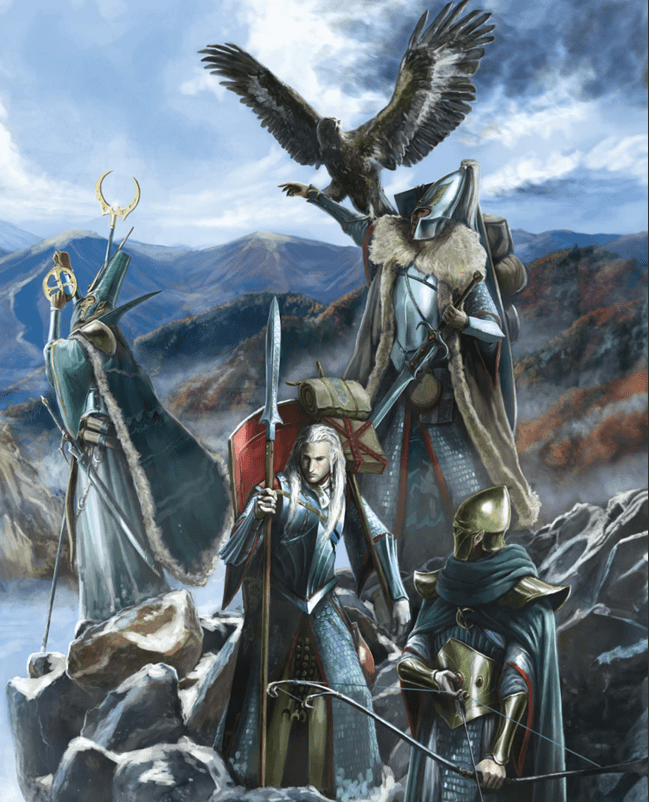
The Asur March into Our Games
What Player’s Guide would exist without new rules for players, and the HEPG is no difference. Looking for information on details of the myriad Elven kingdoms within Ulthuan? Perhaps you want to better understand the difference between the inner and outer kingdoms, societal norms and requirements, or even just some background information to begin thinking about a character’s backstory? Are you looking for Elven attitudes towards the other Warhammer nations and species? With 44 pages of detailed information on Asur Society, the HEPG is a perfect balance of detail and digestibility, with all of the above covered as well as more.
For GM’s, there is an overview on the constant war with the Druchii (formerly Dark Elves), as well as information on Elvish markets, arms and armor, and even the fabled Dragons of Caledor who take to the field to support the Asur. Supplements to Sea of Claws exist with details on the Elven Navy being present. A quick note here that I have seen more of and loved with both this and the Dwarf Player’s Guide – the snippets of history and backstory that Cubicle 7 trickles in amongst the rules details is fantastic. While it has been a constant in every book they’ve published, and while (as a GM) it can occasionally be tough to remember where a certain piece of information is, it has seemed to expand and become more prevalent in the newer releases – or maybe I am just noticing it more as I hit items I didn’t yet know. It wasn’t until this guide that I learned the Druchii burned the ancient forests needed for the Elves to make their Dragonships, and that was why these ships are now so valued and rare. Unless you were in the hobby with the release of Man O’ War (1993) or Warhammer Fantasy Battles 5th (1996) and 7th (2006) edition, you may not have known that, either.
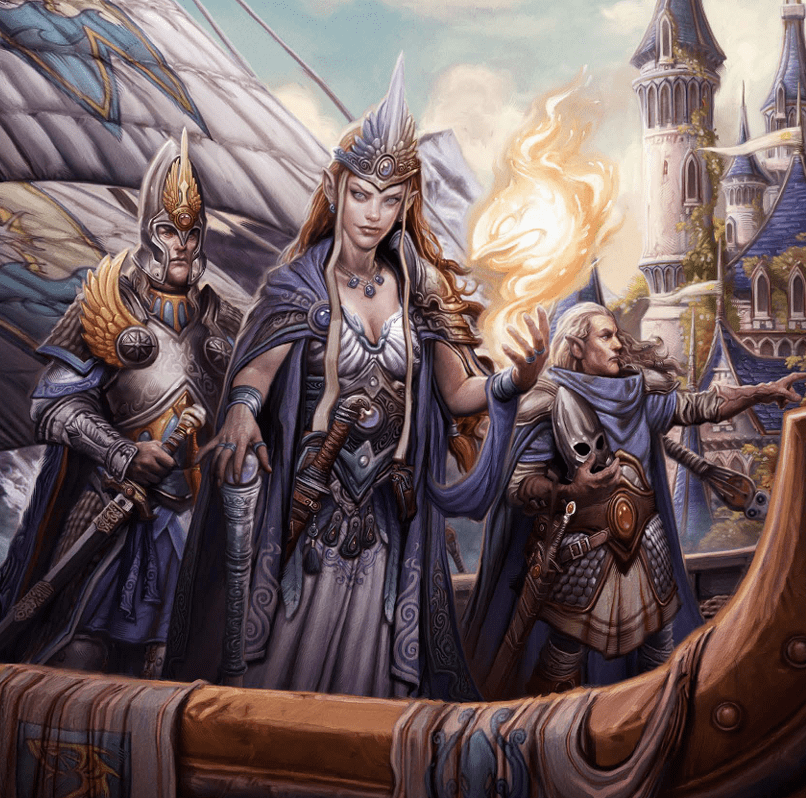
The HEPG not only adds new careers for High Elf players, but also new rules. As a whole, the Elven race is balanced on a knife’s edge, walking the line between light and the darkness, with Khaine, the Elven God of Murder, being a constant threat to the Elves. In come the rules for Yenlui, which is very much the Yin and Yang of the Elves. The rules intrduce different states of Yenlui that an Elf can reach through extreme acts, which can impact your characters chances on certain tests. There are even magic spells that require a certain state in order to even be cast – a unique and interesting mechanic in the already detailed magic system of WFRP.
New mechanics also include the ability to forgo a long term ambition and instead take an obsession, a unique feature due to the longevity of the Elves lives that can create an interesting RP driver. Dreams round out the new mechanics, and fitting with the lore of the Elves and their sensitivity to the Winds of Magic, players can, in collaboration with their GM, have their character be sensitive to these prophetic proclivities, adding further RP opportunity and a chance for GMs to share information in a puzzle like fashion.
One thing I found myself truly appreciating about the HEPG was that it didn’t skirt the fact that Elves in Warhammer are haughty and think themselves superior to everyone else. It hits that nail right on the head, calling out to players of Elven characters that while this is true, the Elves focus on superiority through social graces, a nice nod to prevent the GM Nightmare inducing “It’s what my character would do” when someone rolls up an Elf and treats their tablemates as little more than their servants. Additionally, the added careers in the HEPG all lend themselves to characters who could (or would) find themselves leaving Ulthuan, a needed item for any game not set on the island nation.

High Magic is Summoned with Destructive Force
Magic in Warhammer is extremely powerful and dangerous, with Elven spellcasters historically being some of the most powerful behind only the Slann. In WFRP, magic can be frustrating, because your characters are just overall not great at it (yet). This difficulty is a beautiful dance as a GM and fan of the IP, because it is so thrilling to watch a player pull of a huge spell, but also harrowing to see them skirt with failure the entire way.
For those new to the IP, magic in Warhammer is split into nine different formats – the eight winds (Aqshy, Azyr, Chamon, Ghur, Ghyran, Hysh, Shyish, and Ulgu), and Dhar, or Dark Magic. Dhar is extremely dangerous because of the general lack of care being put into that casting and the risk it presents to everyone (including the caster).
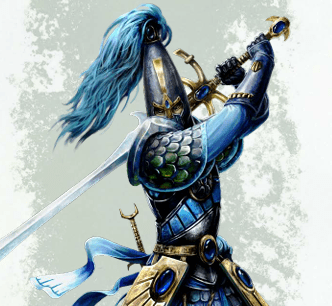
However, there is also High Magic, the Magic of the Elves, and with 25 pages on it, the HEPG goes into detail on this new addition to the WFRP magic system. High Magic was formerly just known as “magic” before the creation of the Great Vortex at Ulthuan. Originally meant to stem the flow of chaos into the world, and thus stop the Daemonic incursions, the Great Vortex also “shattered” magic in Warhammer, serving as a prism that split magic into the eight different colored winds. The HEPG introduces rules for High Magic and the specific career that can access high magic – the Elven Mage. With five career tiers, the mage is extremely powerful and the only class capable of accessing Qhaysh (High Magic) and it’s sheer power. In addition, casters of High Magic now must deal with the risk of “Magical Burnout” from overcasts, a risk that makes the caster unable to use any spellcasting for a number of days after the burnout occurs.
Lore-wise, mechanics-wise, I flat out love this. Capable of living several thousand years and of being the most potent casters in the game, the Mage Career expands on the Wizard career for those Elves (and only elves – no human can withstand learning more than one wind of magic without succumbing to Chaos) who wish to truly sink XP into casting. To even access High Magic is a huge task and would likely require a player who was willing to carry the same Elf through many campaigns due to the need of progressing every individual wind to a certain point to be able to tap into High Magic. This is only fitting, as High Magic is absolutely, beautifully destructive. GM’s beware if High Magic hits your table, as it will make all but the most epic of adventures significantly easier.
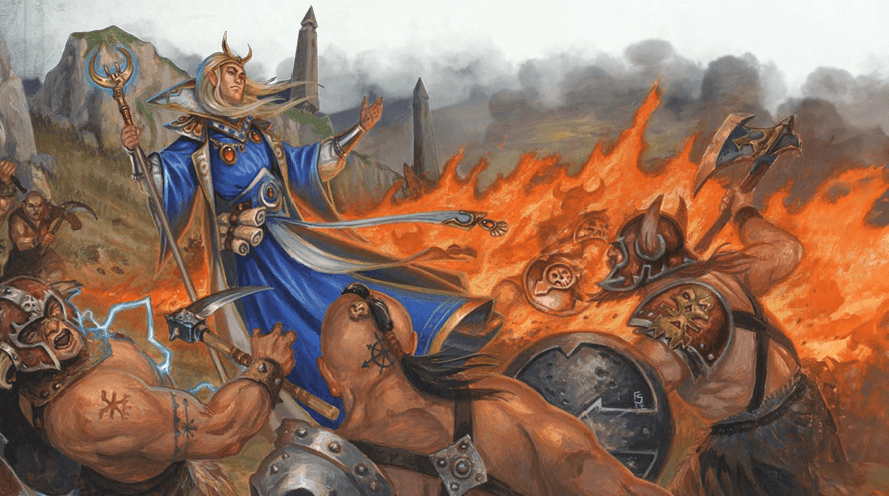
Fifth Tier Careers
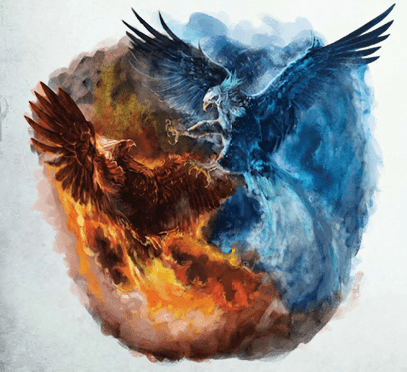
One constant of WFRP 4e has been careers all having four different tiers. However, that has changed, with the HEPG further aligning to the longer lives and rigorous training of Elves by adding fifth levels of the Priest Careers. Prior to jumping into the Smith Priest of Vaul, the Storm Weaver, or the Loremaster of Hoeth, players must complete the career Mage Level 2 (Student Mage). This requirement lends itself both to RP and longer campaigns in general.
Restricting the Fifth Tier Career Levels to Elves is a move that just makes sense from Cubicle 7. While I would have liked to have seen the same for Dwarfs, I understand why these are limited to Elves. Even as Dwarfs can live extremely long lifespans in Warhammer (250-500 years), Elves can live thousands of years. The greatest example of this may be Malerion (formerly Malekith), leader of the Druchii, who at this time is almost 7,000 years old.
The Verdict
Cubicle 7 has once again smashed it out of the park, and I have already pre-ordered my Collector’s Edition of this book. With expansive rules for Elves, a faction who needed a bit of love, this is a must have for all WFRP groups.
9.4/10 – excellent, a must have, and if Padraig and crew keep this up I am going to need a new bookshelf for my WFRP tomes.
(Dawi fans feel free to put me in the book for this, as I am a larger Dwarf than Elf fan and there are still grudges to be settled – Brad)
Grab your horse, dragon, or eagle and hustle over to Cubicle 7 to get your copy of the High Elf Player’s Guide here.
Thank you to the Cubicle 7 Team for providing us a copy of the High Elf Player’s Guide for review. Purchase through the link above provides no financial kickback to Dead Suns Company but does help us continue to review materials for Cubicle 7.
